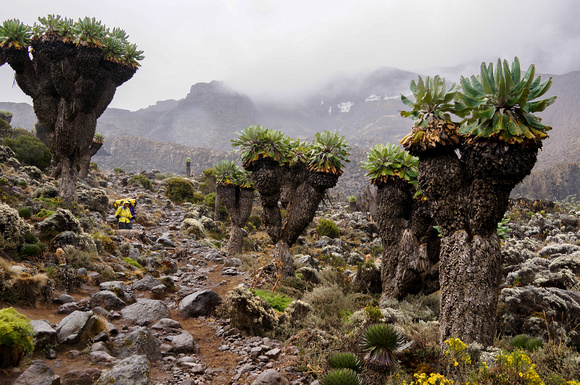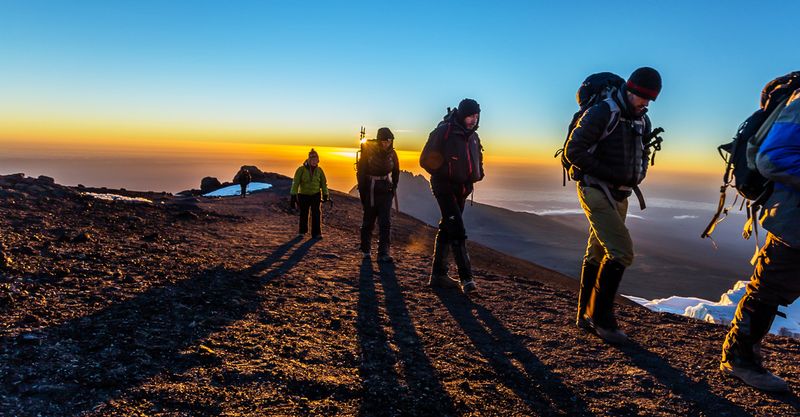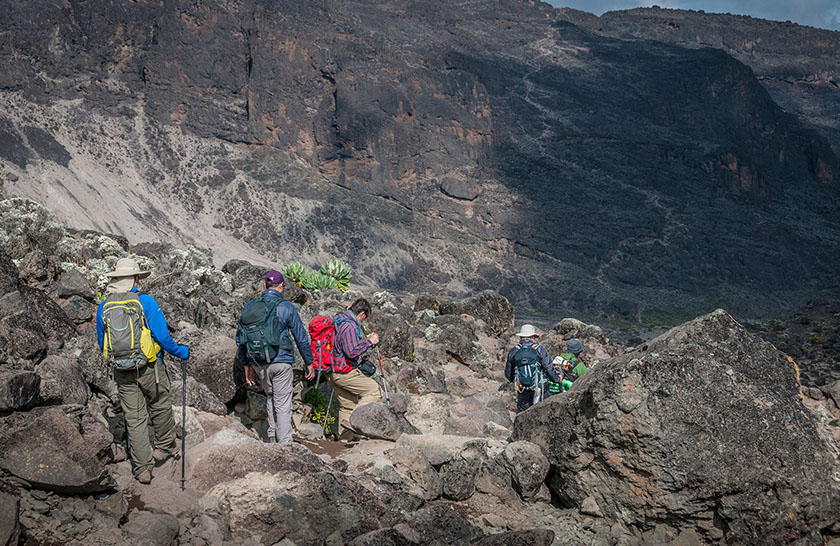Climb Mount Kilimanjaro

Why Climb Kilimanjaro?
Mount Kilimanjaro, “The Roof of Africa,” is more than just a mountain; it’s a dormant volcano, a world icon, and a deeply personal challenge that calls adventurers from across the globe. Standing at an impressive 5,895 meters (19,341 feet) above sea level, it is the highest free-standing mountain in the world and one of the magnificent Seven Summits.
With Maasai Spirit Expedition, you’re not just booking a climb; you’re partnering with a team that is genuinely invested in your safety, success, and the unforgettable memories you’ll create. Let our local expertise guide you to the Roof of Africa.
Best Months to Climb Kilimanjaro
Climbing Mount Kilimanjaro is a year-round adventure, but choosing the right time to go can make all the difference in your experience. The mountain’s unique location near the equator means it has its own microclimates, and understanding the weather patterns is key to planning a successful climb. Here’s everything you need to know about the weather, seasons, and timing for your Kilimanjaro adventure.
Full Moon Climbs: Many climbers choose to summit during a full moon for the incredible experience of seeing the mountain lit by moonlight. If interested, ask us about full moon dates for your preferred climbing window!
These months are the warmest, with clear skies in the mornings and evenings. During the day, light clouds may form, sometimes covering the summit by afternoon. It’s a great time to climb if you enjoy mild temperatures and scenic views
The long rains arrive in April and last until May, bringing heavy downpours on the lower slopes and snowstorms at the summit. The mountain is often covered in thick clouds, making it hard to see the breathtaking views. If possible, it’s best to avoid climbing during this season.
This is the driest and one of the most popular times to climb Kilimanjaro. The weather is usually clear, offering fantastic views and comfortable trekking conditions. However, it can get cold at night, especially at higher altitudes.
From late October to December, short rains create cloudy and wet conditions. While it’s still possible to climb, the mountain is often hidden under clouds, and the rain can make the trek less enjoyable. Fewer crowds, vibrant scenery, and a quieter experience.
Our Kilimanjaro Routes
Find Your Path to the Summit
Choosing the right route is crucial for your Kilimanjaro success and enjoyment. We offer all official routes, each providing a unique perspective and challenge. The longer the route, generally, the better the acclimatization and higher the summit success rate.
Here’s an overview of the routes we operate.

The Whiskey Route
Difficulty: Challenging
Accommodation: Camping

The Western Side
Difficulty: Moderate to Challenging
Accommodation: Camping

The Steep & Direct Approach
Difficulty: Very Challenging
Accommodation: Camping

The Coca-Cola Route
Difficulty: Moderate
Accommodation: Huts

The Quieter Trek
Difficulty: Moderate
Accommodation: Camping

The Longest Route
Difficulty: Moderate
Accommodation: Camping
Frequently Asked Questions
Top Questions & Answers
Planning an unforgettable journey to Tanzania comes with questions, and at Maasai Spirit Expedition, we believe in providing all the clarity you need for a seamless and enriching experience. Here, we address the most common inquiries to help you prepare for your extraordinary adventure with us.
Q: How high is Mount Kilimanjaro?
Q: What's the best time of year to climb Kilimanjaro?
Q: How long does it take to climb Kilimanjaro?
A: The trek duration depends on the route you choose:
- Marangu Route: Typically 5 days, but 6 is better for acclimatization.
- Machame Route: 6 to 7 days, offering a good balance of challenge and acclimatization.
- Lemosho Route: 7 to 8 days, one of the best for acclimatization due to its length.
- Rongai Route: 6 to 7 days, with unique northern approach.
- Umbwe Route: 6 days, very challenging due to steepness.
- Northern Circuit: 8 to 9 days, the longest route providing excellent acclimatization.
Q: Do I need to be in good shape to climb Kilimanjaro?
A: Yes, climbing Kilimanjaro is a physical challenge. While you don't need to be an elite athlete, you should engage in regular physical activity like hiking, running, or cycling for several months before your trek. Focus on cardiovascular fitness, leg strength, and endurance. Also, mental preparation for the long days and high-altitude conditions is crucial.
Q: How do I prepare for altitude sickness?
A: Acclimatization is your best defense:
- Ascend Slowly: Choose routes with acclimatization days or longer durations.
- Hydration: Drink plenty of water, about 3-4 liters a day.
- Medication: Consider taking Diamox (Acetazolamide) after consulting with a doctor; it helps in acclimatization by speeding up the breathing rate.
- Monitor Symptoms: Know the signs of altitude sickness (headaches, nausea, dizziness) and be ready to descend if symptoms escalate.
Q: What routes can I take to climb Kilimanjaro?
A: Some popular routes include:
- Marangu Route (also known as the "Coca-Cola Route")
- Machame Route (known for its scenic beauty)
- Lemosho Route (more scenic with good acclimatization)
- Rongai Route (quieter, approaching from the north)
- Northern Circuit (longer and more scenic, offering great acclimatization)
Each route has different difficulty levels and durations.
Q: What is the cost of climbing Kilimanjaro?
A: The cost varies depending on the route, number of days, and the trekking company. On average, prices range from $1,500 to $4,000 USD for a guided trek, including park fees, accommodations, meals, and guides.

